This post will show some more photographs taken during our recent visit to Goose Pond in Indiana.
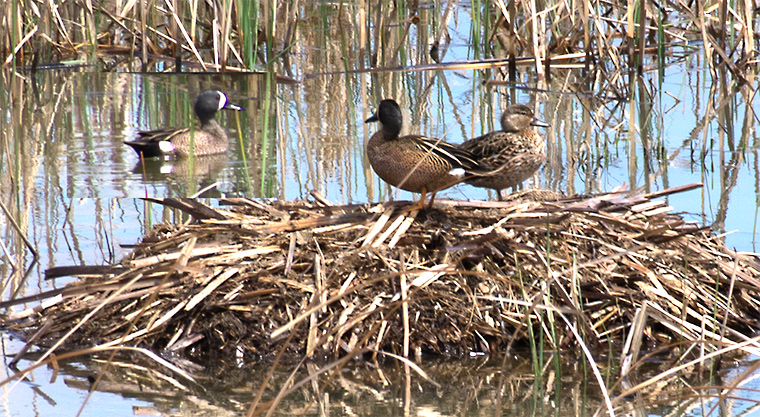
In this photograph a pair of Bluewinged Teal (Spatula discors) are sitting on top of a muskrat pushup. The male Teal seems to be eyeing another male that is swimming past.
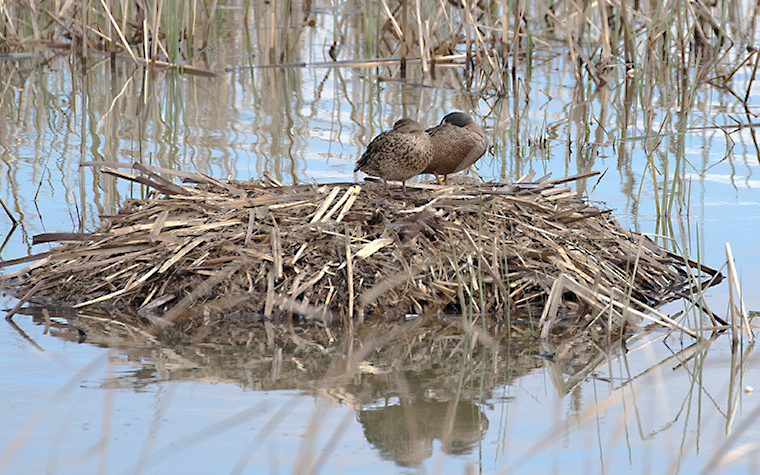
Apparently the threat of the possibly competing male has passed and the pair have settled down for a nap.
Muskrats (Ondatra zibethicus) will make their homes by burrowing under a bank if that sort of habitat is available. In wetlands such as those at Goose Pond where no steep banks are available, muskrats construct piles of vegetation with cavities inside where they can shelter. The structures are sometimes called “pushups” and sometimes “lodges”. They are typically made entirely of herbaceous vegetation, and do not contain woody material such as beavers (Castor canadensis) use to construct their lodges. Indeed, if food becomes scarce, muskrats are known to eat away at their pushups from the inside.
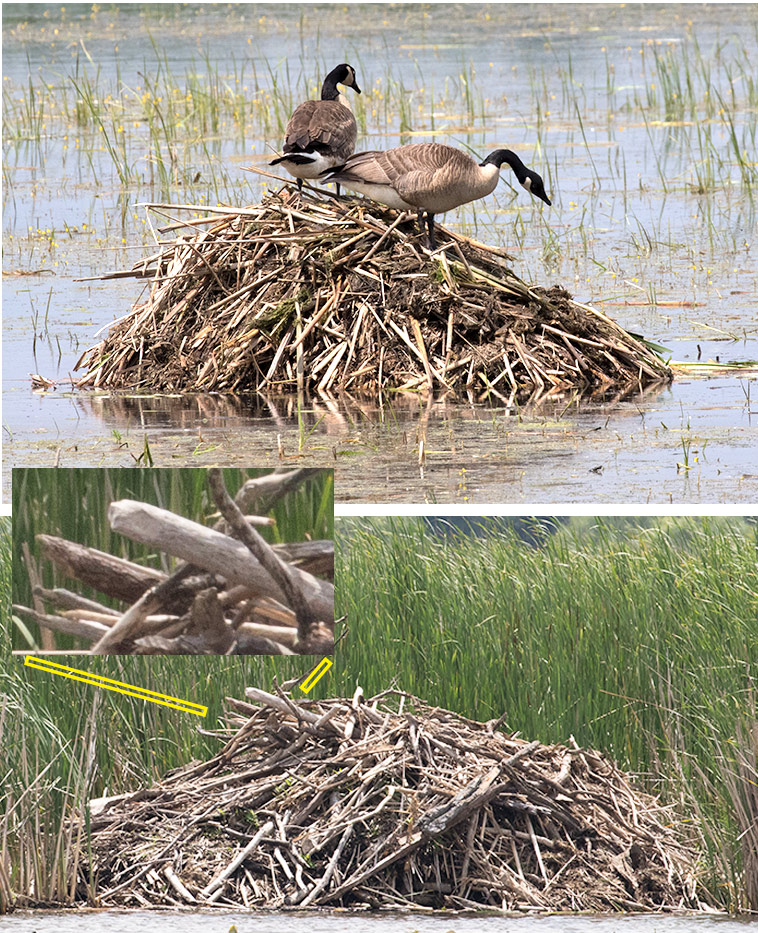
The photographs above show a comparison between a muskrat pushup (with the geese on top) and a beaver lodge. Note that the beaver lodge is constructed of woody material. The magnified insert shows branches at the top of the beaver lodge. It is apparent that this structure is composed of small logs and twigs with the characteristic chewing marks made by the beavers.
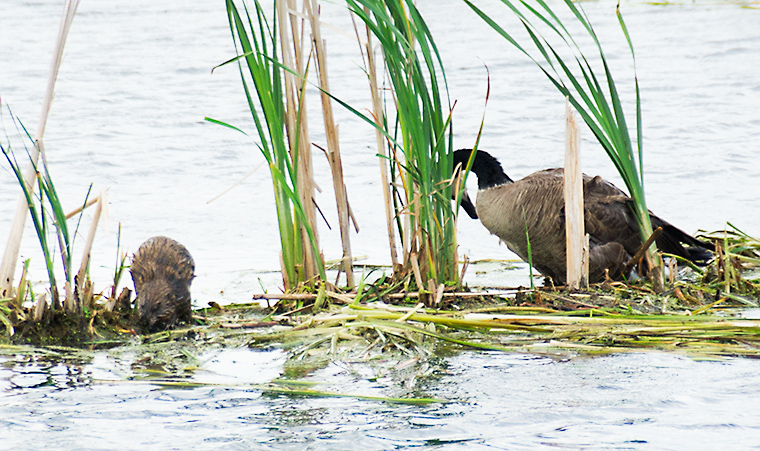
We did not see any of the muskrats at Goose Pond, so I will show some in photographs we took at Horicon Marsh in Wisconsin a couple of years ago. The photograph above is included to provide an idea of the size of a muskrat compared to a Canada Goose (Branta canadensis), which I hope will be familiar to most readers.
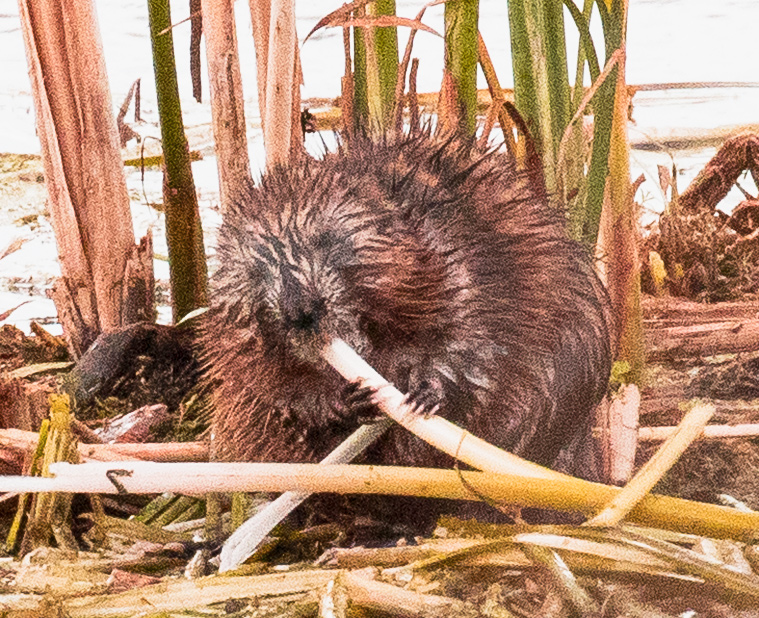
Here is a closer view of a muskrat eating the base of a cattail plant. Muskrats are almost exclusively vegetarian.
Muskrats have a luxuriant fur that is in two layers, and it keeps them waterproofed. It was formerly widely used in the U.S., where it was marketed as “Hudson Seal”. I guess no one wanted a coat made of “muskrat” fur.
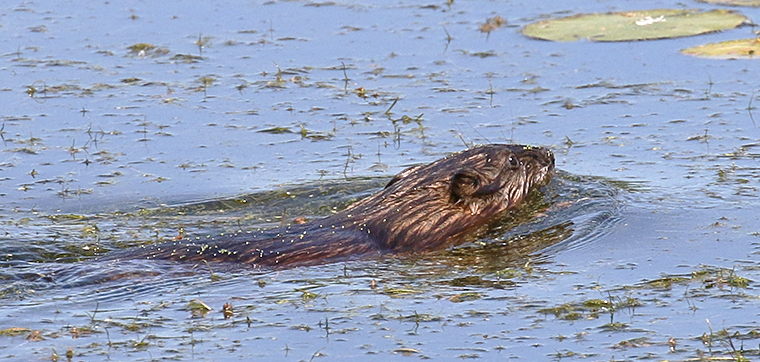
Muskrats are quite at home in the water. They can stay submerged for several minutes.
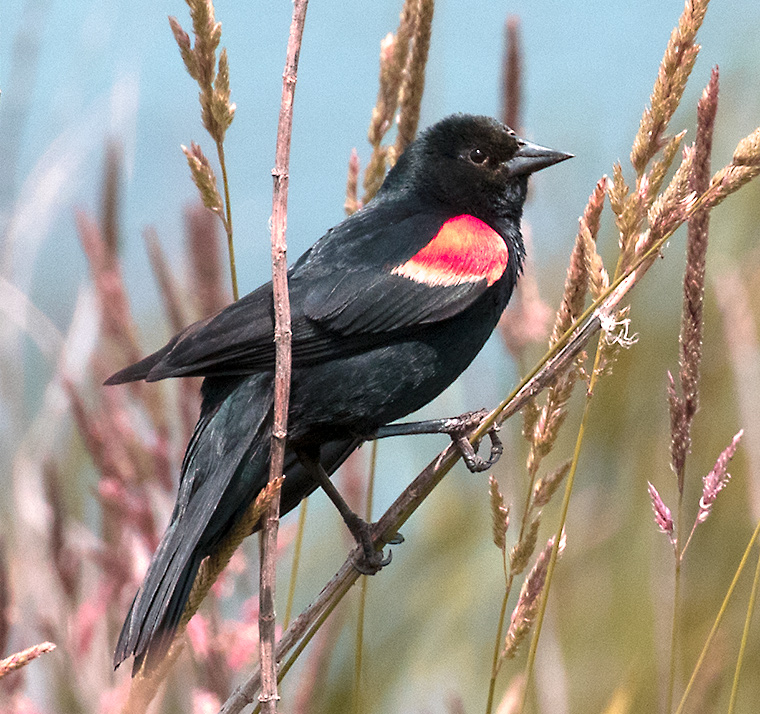
Of course we saw other things in addition to muskrats and waterfowl. There were lots of Red-winged Blackbirds (Agelaius phoeniceus). I hope we get a chance to come back in March or April, which should be peak season for migrating waterfowl.
Discover more from A Naturalist's Journal
Subscribe to get the latest posts to your email.

Thanks Gary…Are skinks poisonous and do they bite? We have some fairly large ones on our property. Also we decided the Carolina Wren is the bird that sings “I need you, I need you or we need you, we need you.” It is very clear also. Snakes show up and lay around for a couple of days every spring and then disappear. Fortunately so far they have been black snakes. Is this related to some sort of mating thing? Hope you and your wife are enjoying life but it looks like you are.
Hello Michele,
Skinks are not poisonous, and you would be hard-pressed to induce one to bite you. If you did pick one up and somehow get it to bite you, it would not be able to break your skin. The snakes you see in the spring are probably just basking to raise their body temperature so they can become more active. Your idea about the Carolina Wren sounds OK. Why don’t you go to one of the bird song sites on the internet and listen to the Carolina Wren song? That would confirm it, A good site is: allaboutbirds.org
Hah! I used to have a mink-dyed muskrat coat. It was left when my father-in-law sold his department store; whoever had owned it never came back for it. Anyway, it was bee-yutiful!
I was out to dinner with a friend and gave the coat to the coat check person. My friend told me that the idea is to leave with a better coat than you arrived in, and that my coat was safe.
I sent it to PETA when we invaded Afghanistan.
I grew up near a nature preserve and we used to ride our bikes there to watch for beavers—there were lots of dams and lodges, but in all those years, we never saw a beaver.
Great! What do you know? A muskrat coat! That is a good story about checking your coat in and feeling safe, because no coat there would be inferior to yours.
It is too bad that you never got to see a beaver. Come and visit us, and there is a good chance that you can see one in the lake in our backyard. Krista saw her first beaver here a week or so ago.